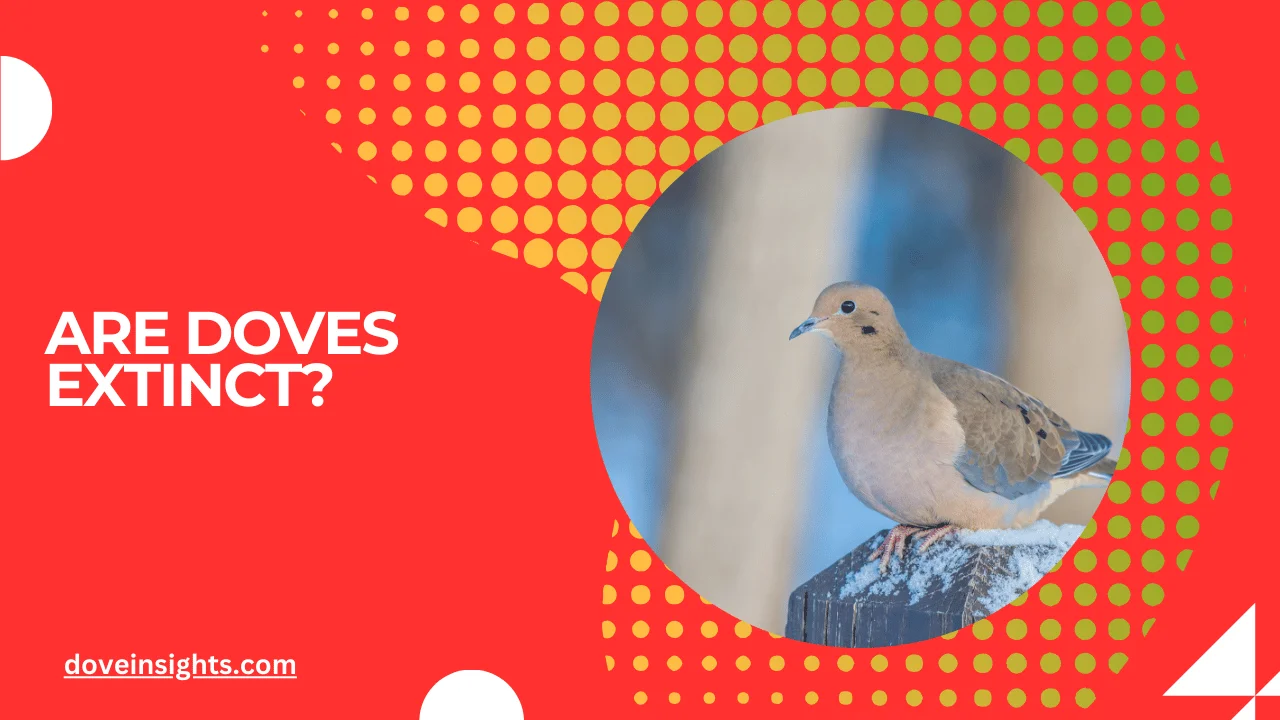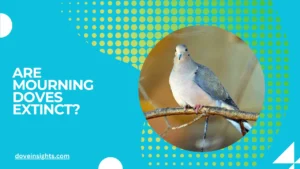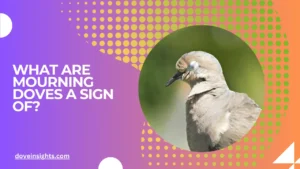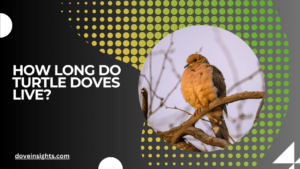The soft cooing of a dove is one of nature’s most familiar sounds, evoking feelings of peace and tranquility.
But in recent years, a troubling question has emerged—are doves going extinct? While many species of doves continue to thrive, there have been alarming reports about the decline of certain dove populations, sparking concerns about the future of these graceful birds.
The topic is not only important for bird lovers and conservationists, but it also resonates with anyone who values the delicate balance of ecosystems and the biodiversity that sustains our planet.
The question of whether doves are at risk of extinction is far from straightforward. Some dove species are indeed facing severe threats due to habitat loss, climate change, and hunting, while others continue to populate urban areas and rural landscapes with little apparent risk.
The struggle of species like the Passenger Pigeon, once abundant but now completely extinct, serves as a stark reminder of how quickly a species can disappear. This raises an essential question: how much do we know about the status of doves in our world today, and what can be done to protect them?
This article explores the current state of dove populations, delving into the causes behind their decline, the efforts being made to conserve them, and the vital role they play in ecosystems.
By understanding whether doves are truly endangered, we can better appreciate the urgency of preserving these birds and take action to safeguard their future. Join us as we examine the challenges doves face, their significance to the environment, and what can be done to ensure they remain part of our natural world.
Contents
The Importance of Doves in Our Ecosystem
Before we dive into the question of dove extinction, it’s important to first understand why these birds are so vital to the ecosystems they inhabit. Doves play a crucial role in maintaining the balance of nature.
They are primarily seed dispersers, helping to propagate a wide range of plants by feeding on seeds and fruit. This process allows new plants to grow and thrive, supporting a diverse array of other wildlife, including insects, mammals, and other bird species.
Furthermore, doves are also an important food source for predators such as hawks, owls, and foxes. Their presence in the food chain helps maintain the biological balance of ecosystems. In urban environments, doves also contribute to pollination, acting as intermediaries in the delicate dance between plants and insects.
This interconnectedness underscores the importance of ensuring that dove populations remain healthy and abundant, as their decline would have ripple effects throughout the environment.
The Threats Facing Doves
While doves are a staple of many ecosystems, they are not immune to the many challenges facing wildlife today. The primary threats to dove populations come from habitat destruction, overhunting, and climate change.
Urbanization and agricultural expansion have led to the loss of natural habitats where doves once thrived. As forests and open landscapes give way to buildings and farmland, doves are forced to adapt to new environments or face the risk of population decline.
Overhunting has also historically been a significant issue. Some dove species were hunted extensively for their meat, feathers, and even for sport. This pressure, combined with habitat loss, has caused severe population declines in certain regions.
Additionally, climate change is altering the availability of food and nesting sites, pushing doves to migrate or alter their behavior, making it harder for them to survive in their traditional environments.
Endangered Dove Species
There are several dove species that are currently listed as endangered or threatened by the International Union for Conservation of Nature (IUCN).
One of the most notable examples is the Nicobar pigeon, a species found in Southeast Asia that is at risk due to habitat loss and the introduction of invasive species. Another example is the Tonga ground dove, which is critically endangered and faces threats from predation and human disturbance.
Perhaps the most famous case of dove extinction is the Passenger Pigeon, once numbering in the billions in North America. Overhunting and habitat destruction led to its extinction in the early 20th century, serving as a tragic reminder of the consequences of human impact on wildlife.
While no doves are currently facing the same fate as the Passenger Pigeon, the decline of species like the Nicobar pigeon and the Tonga ground dove highlights the ongoing risks to dove populations and the urgency of conservation efforts.
Conservation Efforts for Doves
Despite the threats doves face, there are many efforts underway to protect and conserve these birds. One important aspect of dove conservation is the establishment of protected areas and wildlife reserves, where doves can live and breed without the pressures of human development.
For example, the conservation of tropical forests in Southeast Asia has been critical in protecting species like the Nicobar pigeon.
In addition to habitat protection, there are also breeding programs that aim to increase the population of endangered dove species. These programs are often run by wildlife organizations and zoos, and they work to reintroduce captive-bred doves into their natural habitats.
Conservationists are also working to raise awareness about the threats facing doves, lobbying for stronger laws against hunting and environmental destruction. In some areas, reforestation efforts have been successful in restoring habitats that are critical for dove populations.
How You Can Help Protect Doves
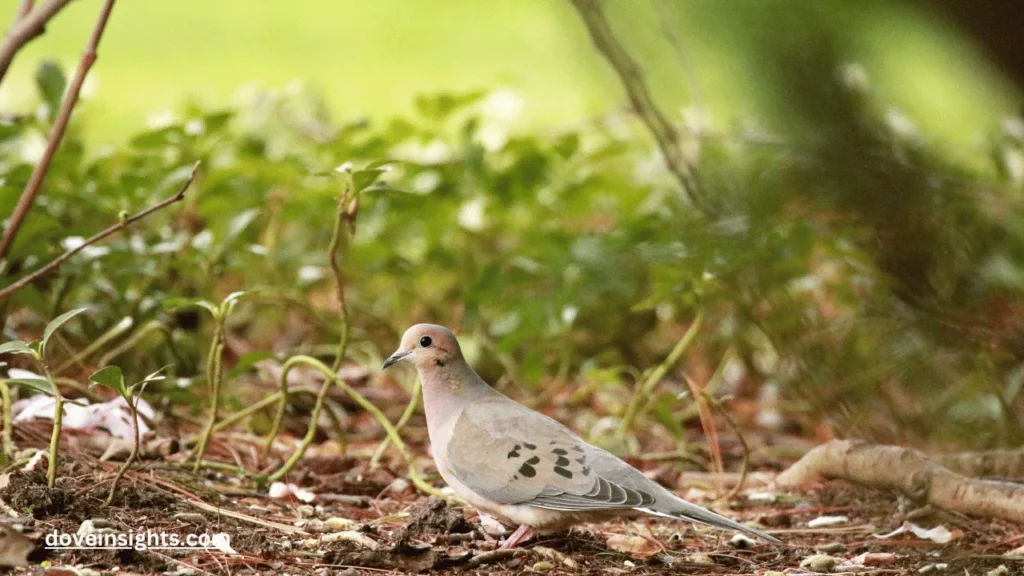
While large-scale conservation efforts are crucial, individuals can also make a significant difference in the protection of doves and other wildlife.
One of the most effective ways to help is by supporting local and global conservation organizations that focus on dove species and their habitats. Many of these organizations rely on donations and volunteers to continue their important work.
Another simple yet effective way to support dove populations is by creating bird-friendly environments in your own backyard. Planting native plants, avoiding the use of pesticides, and providing clean water sources can help attract doves and other wildlife to your area.
Additionally, reducing carbon emissions by supporting sustainable practices and advocating for climate action can help mitigate the impacts of climate change on dove habitats.
Conclusion
So, are doves extinct? Thankfully, no, but many dove species are at risk. From habitat destruction to climate change and overhunting, these birds face numerous challenges that threaten their survival.
However, through collective conservation efforts and increased awareness, we can ensure that doves continue to thrive in our world. Their role in ecosystems is too important to ignore, and by protecting these graceful creatures, we are not only saving a species but also preserving the delicate balance of nature.
Now, more than ever, it is crucial that we work together to protect doves and ensure that future generations can hear their gentle cooing in the skies above.
FAQ’s
Are doves on the verge of extinction?
While not all dove species are extinct, some are facing significant threats that could push them towards extinction. Species like the Nicobar pigeon and the Tonga ground dove are critically endangered, with habitat loss, overhunting, and invasive species being major contributors to their declining populations. Conservation efforts are ongoing, but many dove species are still at risk.
What is the main reason for the decline in dove populations?
The primary causes for the decline of dove populations are habitat destruction, overhunting, and climate change. As forests and natural landscapes are replaced by urbanization and agriculture, doves lose their nesting and feeding grounds. Overhunting, historically and in some areas today, also contributes to population drops. Furthermore, climate change is affecting food availability and migration patterns.
Which dove species are considered endangered?
Several dove species are classified as endangered or critically endangered by the IUCN. Examples include the Nicobar pigeon, found in Southeast Asia, and the Tonga ground dove, native to the Pacific Islands. These species are threatened by habitat loss, predation, and human disturbance, and they require urgent conservation efforts to survive.
What happened to the Passenger Pigeon?
The Passenger Pigeon was once the most numerous bird in North America, with populations reaching into the billions. However, overhunting and habitat destruction led to the rapid decline of the species. The last Passenger Pigeon died in captivity in 1914, marking its extinction. This tragic event serves as a cautionary tale about the dangers of unsustainable human practices on wildlife.
What are conservationists doing to protect doves?
Conservationists are working on a variety of fronts to protect doves. These efforts include the establishment of protected areas and wildlife reserves where doves can thrive without the pressures of development. Breeding programs are also in place to help restore populations of endangered dove species. Additionally, awareness campaigns and lobbying for stronger environmental protections are critical in securing a future for these birds.
How can I help protect doves?
There are several ways individuals can contribute to dove conservation. Supporting organizations focused on wildlife protection through donations or volunteering can directly impact conservation efforts. In your own yard, creating a bird-friendly environment by planting native species, reducing pesticide use, and providing water sources can help attract and support dove populations. Additionally, advocating for climate action and supporting sustainable practices helps protect dove habitats from the impacts of climate change.

